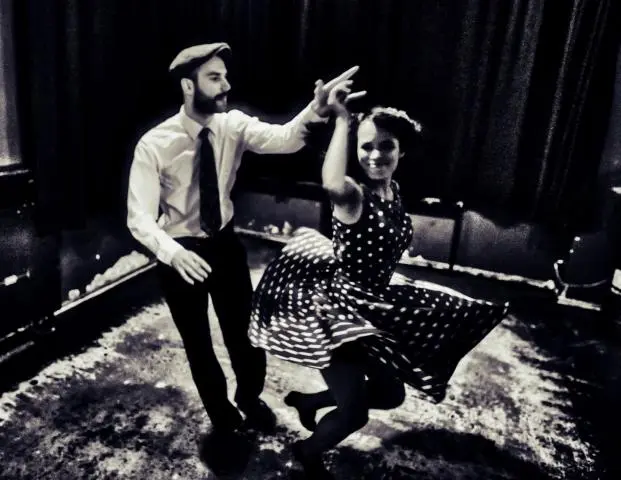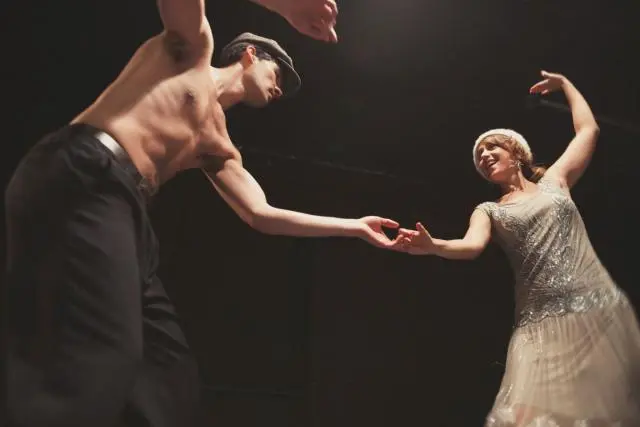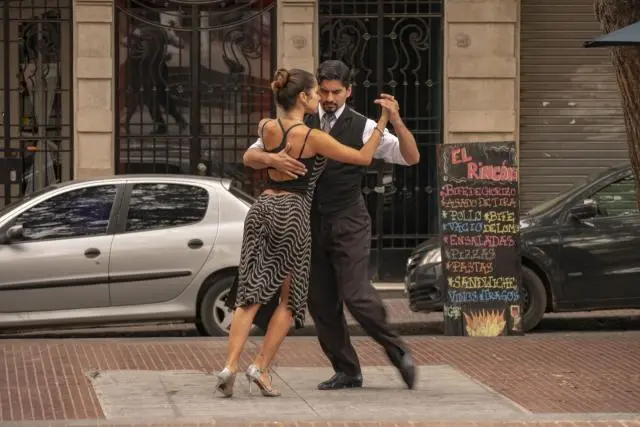Lindy Hop in India
Pure joy of life
Lindy Hop - Pure Joy of Life
This lively dance style originated in the 1920s and 1930s in America, serving as inspiration for Boogie-Woogie and Jive. Considered an evolution of the Charleston and tap dance, Lindy Hop thrived in the legendary ballrooms of New York, accompanied by the sounds of Big Band Swing music. There are various stories about the origin of the name Lindy Hop, but all attribute it to Charles Lindbergh, allegedly in his honor. The dance gained widespread popularity through stages and cinema and saw a resurgence in Europe since the early 1980s by enthusiastic dancers. Nowadays, Lindy Hop Championships are held, and Sweden hosts the Lindy Hop Festival annually, drawing Lindy Hop dancers from around the world for a spectacular five-week event.
Lindy Hop basic step
The Lindy Hop basic step is an essential move in this 1920s swing dance. It typically involves an eight-count move, often referred to as the Swing Out or the Whip. While the exact foot placement may vary based on regional and generational styles, the fundamental structure of the basic step remains consistent. In the single-time framework, the basic step for the leader involves stepping back with the left foot, while the follower responds accordingly. The dance can also be performed in a double-time framework for an added challenge. Additionally, dancers are encouraged to move with the music, focus on connected movements, and explore variations to express their creativity and personal style. For visual demonstrations and tutorials, there are resources available on platforms like YouTube, where instructors break down the basic steps and provide guidance for learning the Lindy Hop
Lindy Hop basic styles
The Lindy Hop encompasses various styles and influences, allowing for a rich and diverse dance experience. Some of the prominent styles and variations within the Lindy Hop include:
-
Contemporary Variation: A contemporary variation of Lindy Hop has emerged, characterized by slower music, a greater emphasis on improvisation, and a distinctive "groove" style. This style provides more freedom for dancers to interpret the music and incorporate their own improvised movements.
-
Regional and Generational Styles: The Lindy Hop basic step may vary based on regional and generational styles. The fundamental structure of the dance remains consistent, but the exact foot placement and movement style may differ. Lindy Hop prioritizes individual style, creative improvisation, and musical interpretation within a community of dancers.
-
Incorporation of Other Dance Styles: Lindy Hop is a melting pot of dance styles, incorporating influences from Charleston, blues, and solo jazz. It features unique movements with Charleston, blues, and solo jazz influences, making it a dynamic and diverse dance form. Dancers are encouraged to move with the music, focus on connected movements, and explore variations to express their creativity and personal style. Visual demonstrations and tutorials for the different Lindy Hop styles are available on platforms like YouTube, where instructors break down the basic steps and provide guidance for learning the dance also you can join a Dance Schools where you will get the proper guidance on the basic to advance steps
How hard is it to learn Lindy hop?
Learning Lindy Hop can be challenging, but it is possible to learn the dance fairly quickly with practice and dedication. According to a post on Dance Forums, Lindy Hop is more challenging than East Coast Swing, but it can be learned quickly. The physical rigor of the training may vary depending on the individual's fitness level and the intensity of the class. Lindy Hop can be danced at a slower pace, but it is an energetic dance that requires stamina and coordination. One reason why Lindy Hop may seem difficult is that it can be done in both choreographed and improvised styles. Improvised Lindy Hop is primarily a call and response dance, which can be challenging for beginners who are not familiar with the dance's structure. However, with practice and guidance from experienced instructors, beginners can learn the basic steps and variations of Lindy Hop. In summary, while Lindy Hop can be challenging to learn, it is possible to learn the dance with practice and dedication. Beginners are encouraged to take classes with experienced instructors, practice regularly, and move with the music to develop their own style and improvisation skills
Lindy Hop Music and Swing Dance
Lindy Hop is a swing dance that is typically performed to swing music, which is characterized by its upbeat tempo and syncopated rhythms. Swing music is often associated with the big band era of the 1930s and 1940s, but it has since evolved to include various styles and genres. The dance is known for its energetic and acrobatic movements, including aerials, lifts, and spins
Lindy Hop Classes, Workshops, and Festivals
Lindy Hop classes and workshops are available in many cities around the world, providing opportunities for dancers of all levels to learn and improve their skills. Many Lindy Hop festivals are also held annually, bringing together dancers from around the world to celebrate the dance and its culture. These events often feature live music, competitions, social dancing, and workshops with renowned instructors.
Upbeat, with Lifts, and Loads of Fun
Lindy Hop, the dance where you can gracefully sweep across the dance floor in pairs to a swinging rhythm and infectious music. The lively swing music alone spreads good vibes. There's the Lindy Hop basic step, divided into four basic moves. Once you've mastered the basics, you can practice lifts with your dance partner, increase the speed, and one thing is for sure: the fun keeps growing. Especially when like-minded individuals dance on the floor, pure energy is palpable. The music setting the pace is inherently cheerful. This dance never gets dull and can even become a genuine athletic challenge.
Lindy Hop as a Partner and Social Dance
Fundamentally, Lindy Hop is a partner dance. The more you dance together, the more harmonious it will feel and look. With the increasing popularity of Lindy Hop, more dance schools have incorporated this dance into their programs, offering courses for beginners to advanced dancers. If you've fallen in love with Lindy Hop but don't have a partner, we can help. We understand how challenging it can be to find a dance partner. The goal of our platform Lets-Dance is not only to showcase dance schools in Germany, Austria, and Switzerland but also to facilitate the connection of potential dance partners. The more people sign up, the greater the chances. Simply register with us and get an overview. We look forward to welcoming you!
Shop
Popular blog posts about dancing
Create your dance profile on Lets-Dance
Register your dance school
Top cities
Top dances



